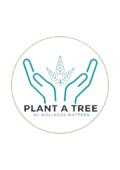Guide to Performing a Plank Exercise
A plank is a simple yet highly effective exercise that strengthens your core, improves posture, and builds overall stability. Here’s how to perform a plank correctly, along with its benefits.
How to Perform a Plank
Start Position:
- Begin by lying face down on the floor.
- Place your forearms flat on the ground, elbows directly under your shoulders.
- Extend your legs straight back, toes tucked under.
Lift Your Body:
- Push up your body using your core muscles.
- Keep your body in a straight line from your head to your heels—avoid arching or sagging your back.
Engage Your Core:
- Tighten your abdominal muscles.
- Squeeze your glutes to maintain stability.
Align Your Head and Neck:
- Keep your head in a neutral position, gazing at the floor.
Hold the Position:
- Start with holding the plank for 15–30 seconds and gradually increase your time as your strength improves.
- Remember to breathe steadily.
End the Exercise:
- Lower your knees to the floor gently to release the position.
Common Mistakes to Avoid
- Sagging Hips: This reduces core engagement and may strain your lower back.
- Overarching Back: Can cause discomfort and reduce effectiveness.
- Holding Your Breath: Always breathe normally to maintain endurance.
Benefits of a Plank Exercise
Core Strength:
- Builds a stronger core, supporting better balance and stability.
Improves Posture:
- Enhances your ability to stand and sit up straight, reducing the risk of back pain.
Boosts Metabolism:
- Engages multiple muscle groups, helping to burn more calories even at rest.
Strengthens Back Muscles:
- Provides relief from back pain and prevents future injuries.
Improves Flexibility:
- Stretches muscles around shoulders, collarbones, and thighs.
Enhances Mental Health:
- The focus required during a plank promotes mindfulness and stress relief.
Increases Endurance:
- Regular planking improves overall physical endurance and stamina.
Progressions for Advanced Plank Variations
- Side Plank: Target oblique muscles.
- Plank with Shoulder Taps: Adds dynamic movement for more stability.
- Plank with Leg Raises: Increases glute and hamstring engagement.
- Weighted Plank: Boosts strength with added resistance.
By incorporating planks into your fitness routine, you can enjoy a variety of physical and mental benefits while building a solid foundation of strength and stability.
